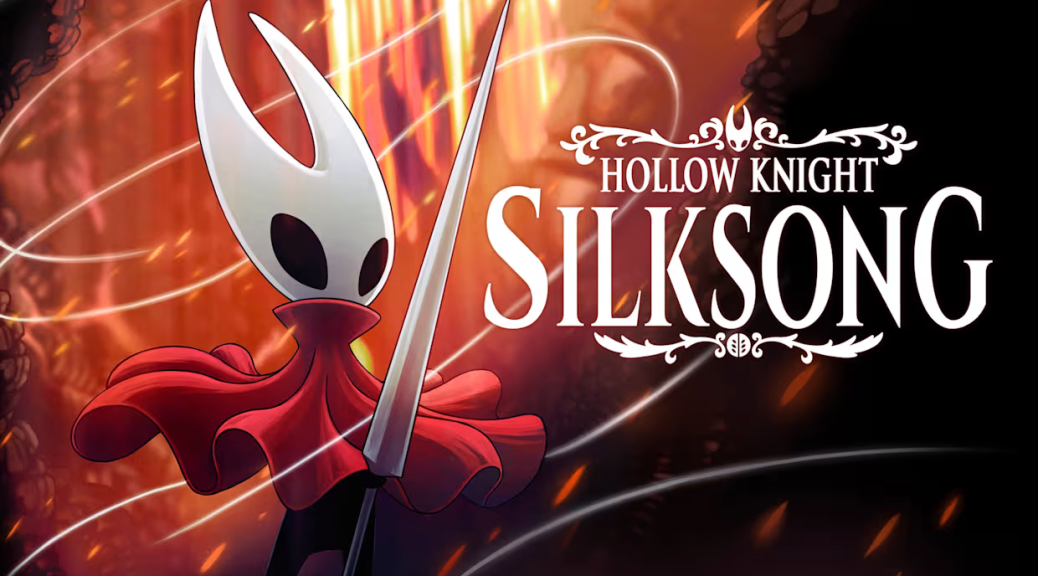
Hollow Knight: Silksong
My recommendation of Silksong has to come with a disclaimer. While it’s not unheard of for planned expansions to become full standalone sequels, most previous examples have aimed for broad appeal. Silksong, on the other hand, is derived from an already-difficult indie soulslike, communicating a very definitive target audience, and it’s not really Team Cherry’s fault that the Internet meme-hyped it onto everyone’s wishlist. So while I greatly enjoyed Silksong overall, I did so as someone who is pretty good at Hollow Knight, and I absolutely would not recommend it to someone as their introduction to the series. Nonetheless, I’m normally a champion of selectable difficulty levels, and it would be disingenuous of me not to highlight their absence here just because the default difficulty is acceptable for me specifically.
So yeah, if you hadn’t already heard, this game is really hard. Enemies are fast, powerful, resilient, evasive, and numerous. And yet, most of the difficulty is still fair. Opponents rarely rely on unpredictable movements or projectile trajectories, and their attack tells are almost never obscured. Everything that made the original surprisingly approachable is also present: if you’re stuck on a boss, there’s almost always an alternative route to explore, and the resource used for healing is restored with successful melee attacks, meaning you can always recover from small mistakes. Healing is actually more forgiving this time around – it restores more health at once and can be executed much more reliably, including in midair. Of course, the exceptions to all of this are genuinely rage-inducing, and I agree with the consensus that the game goes overboard with double-damage attacks, but it’s not enough to ruin the experience.
Some of the difficulty decisions were seemingly made in response to potential flaws in the original. In Hollow Knight, I almost never used combat techniques outside of standard melee attacks. In contrast, the overwhelming difficulty of Silksong encourages the use of all available tools, which is a design philosophy I generally appreciate. Similarly, in response to money basically not mattering by the final third of the first game, money in Silksong is scarcely distributed and extremely useful – too much so, in some cases. In particular, having to pay for checkpoint use in an area with barely any available currency is bad game design regardless of the narrative point it’s making. Much ink has also been spilled over the runbacks between checkpoints and bosses, and while there were a few cases that made me wonder what the hell the developers were thinking, most others could be zoomed through and leapt over with little issue.
When Silksong was still just a Kickstarter stretch goal, its primary objective was to make the character Hornet playable, and in that respect, it succeeds with flying colours. Your movement abilities are acrobatic, precise, and integrated thoroughly into combat – a holy grail of Metroidvania design that amplifies the depth of both systems. Hornet being a pre-existing character instead of the silent blank slate typical of soulslikes also means the story is a little less opaque than before, but there are still tons of subtle background details to be gleaned. Like the gameplay, it’s also best experienced by someone already familiar with the first game, but regardless, it’s carried by top-notch writing, an emotional range that spans from adorable to unsettling, and some interesting gameplay integrations that I don’t want to spoil.
If the difficulty hadn’t dominated the conversation around this game, I think we’d all be talking about how consistently it goes above and beyond what was promised. Its scope is enormous; hidden areas that would contain a single power-up in a lesser title are entire regions here, complete with branching paths and secrets of their own. Even though it doesn’t boast any particularly original features on the surface, the wealth of content hides a scattering of small inventions that ensure it could never be criticized as a glorified DLC. Finally, its intensely detailed visual and audio design seemingly dare the audience to continue asking how its infamously long development time was spent. Hollow Knight was a game that I wished I could experience for the first time again, and Silksong provided that feeling as well as it possibly could.